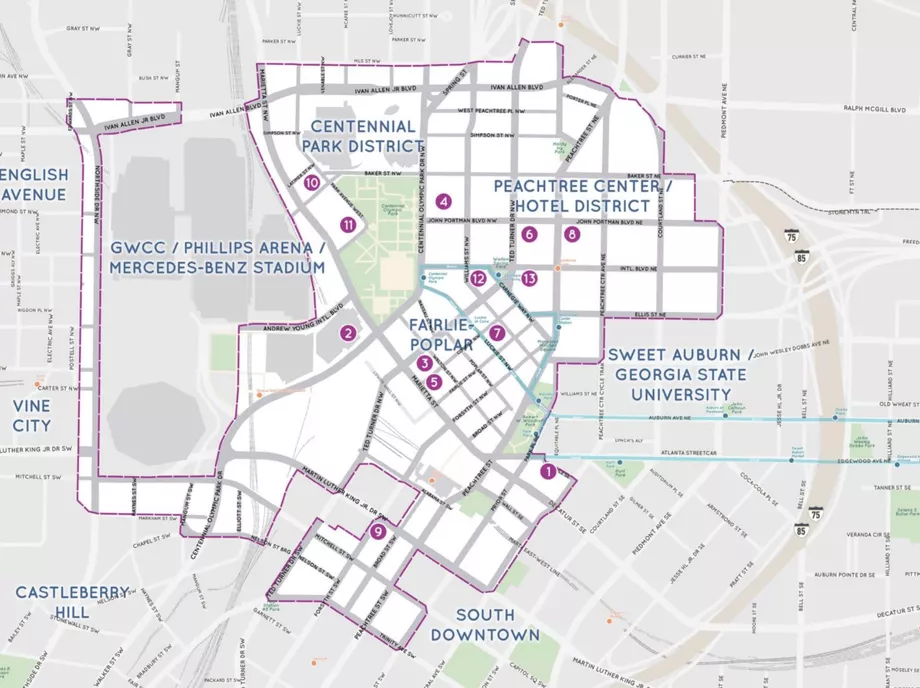
The high-rise formerly known as the Equitable Building has been an Atlanta landmark since its completion in 1968. But in the last few weeks, the building has lost its glowing “Equitable” nameplate that deemed it iconic to the Atlanta community. Instead, the building will soon don a large digital sign that bears the logo of Georgia’s Own Credit Union, along with other paid advertisements.
The change in design is a result of a new ordinance voted on by the Atlanta City Council in July 2017. The ordinance loosens restrictions on advertising and light projection, creating availability for new signs and murals. The council passed the new ordinance after the idea was pitched by Central Atlanta Progress.
CAP is a private organization focused on expanding Atlanta’s financial and artistic potential. The new ordinance created the Atlanta Arts and Entertainment District, which occupies almost 100 blocks between Mitchell Street, Piedmont Avenue, Ivan Allen Jr. Boulevard and Northside Drive.
Before the new ordinance, previous regulation required that all murals be certified as not distracting or hazardous to drivers, not primarily conveying any advertisement and not inconsistent to the values of the city. Effectively, this ordinance — put on the books in 1982 — prevented elaborate murals by artists as well as most large scale advertisements in the Downtown area.
Now that the council has voted to pass the new ordinance, it’s widely agreed upon that the digital sign being constructed on the Equitable Building will not be the only sign for long. In fact, Central Atlanta Progress revealed the first 13 sites that will have new signage. Many of these locations are set to receive signage before or right after the Superbowl comes to Atlanta in January.
Many Atlanta residents are divided about the coming reality of Atlanta’s new Arts and Entertainment District. According to Curbed Atlanta, policy makers, residents and even some urban planners have spoken out against the new district.
When asked about the possible implications of a digital sign district, Dr. Jean-Paul Addie, assistant professor in the Urban Studies Institute at Georgia State, said the creation of the district could falsely represent an energetic nightlife, even if the atmosphere doesn’t actually change.
“Downtown Atlanta, more or less, shuts down at 5 o’clock and, on one hand, these lights can provide an aesthetic in the city that, at least, can provide a visual appearance to signify that there are things going on downtown — even if that does not correlate to the presence of bars and restaurants and the type of activities that would associate with a night time economy,” Addie said.
Addie also brought up the observable changes in atmosphere that come with the creation of public spaces similar to Times Square.
“If you go and you experience these places there’s a slight disjuncture, if you will, between the appearance of the lights, glamor, and excitement of the city and what can actually be often times quite sterile places that are overly policed.”
Addie also noted that the addition of an “Atlanta Times Square” could also impact the social dynamic of the Woodruff Park area.
“[Places like Times Square] tend to be only quasi-public in that they are overseen by private security companies rather than being actual functioning public spaces in which the activities of a democratic polis take place, whether that public speaking or homeless people being permitted to lie down and close their eyes in the center of the city.”

https://atlanta.curbed.com/2018/11/15/18095663/downtown-times-square-transformation-equitable-castleberry-hill
